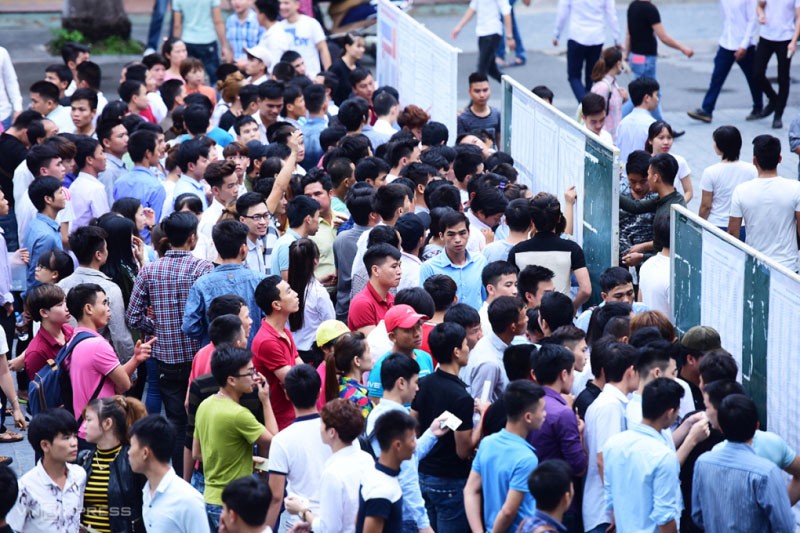
Number of Vietnamese labourers in RoK doubles agreed target
Latest
 |
| Number of Vietnamese labourers in RoK doubles agreed target. Illustrative photo. (Source: daibieunhandan) |
The centre, in collaboration with the Department of Labour, Invalids and Social Affairs of cities and provinces, planned to select around 12,000 Vietnamese people to work in the RoK under the Employment Permit System (EPS) this year.
As of now, the number of registered workers has reached 23,412. Of that number, 19,228 have registered in the field of manufacturing, 343 in the field of construction, 1,283 in the field of agriculture, and 2,558 in the field of fisheries.
Workers have to take a Korean language proficiency test and a skill test. The Korean language proficiency test will be taken on a computer and will consist of two sections: listening comprehension and reading comprehension.
The test has a total of 40 multiple-choice questions, and the time limit is 50 minutes. The minimum passing score for the first round is 110 for the manufacturing industry, 80 for the construction and agricultural industries, and 60 for the fisheries industry. The maximum score is 200.
The number of candidates who meet the Korean proficiency requirements will be selected to take the skills test and will be evaluated based on the number of positions available in each industry, with 110% of the recruitment target for each industry being allocated based on the criteria of highest to lowest scores.
To prevent cheating during the test, the centre will closely monitor the workers' identification documents, including their test registration cards and personal identification papers. Suspected cases of cheating will be checked by comparing their identifying features and fingerprint records on their ID cards, and their registration information will also be verified.
The centre will also use integrated data synthesis software and fingerprint scanners, which will capture photos and fingerprints of the workers. The fingerprint records will be stored in a database and used to verify the workers' identity at skill testing, orientation training, and departure.
Workers who fail to pass the identity verification procedures will be denied further processing, and those caught cheating will be disqualified from the programme, according to the centre.
The software will also issue a warning when it detects the same person attempting to register for the exam multiple times. Any worker found to have improper behaviour will be documented and stopped from participating in the programme for four years.
According to the EPS program signed between MoLISA and the RoK’s Ministry of Employment and Labour, 12,000 Vietnamese workers will be employed in the fields of manufacturing (6,344 workers), construction (901), agriculture (841), and fisheries (4,035).
Vietnamese workers participating in this year’s EPS programme must meet requirements such as having no criminal record according to Vietnamese law and having never been deported from the RoK.
For those who have resided in South Korea on work visas of non-professional employment (E9) or vessel crew (E10), the duration of residence must be less than five years.
Workers who have previously worked in the RoK under the EPS programme must return to Vietnam upon the expiration of their contracts.
Figures from the Ministry of Labour, Invalids and Social Affairs showed that up to now, Vietnam has sent over 110,000 workers to the RoK under the EPS programme, with an average income of 1,800 USD per month.
On March 10, the ministry announced the EPS programme with the RoK would be temporarily suspended for eight districts, towns and cities due to the high rate of workers who did not return to Vietnam upon the expiration of their contracts.
The districts are Nghi Xuan and Cam Xuyen districts of Ha Tinh province; Chi Linh city of Hai Duong province; Cua Lo township, Nghi Loc and Hung Nguyen districts of Nghe An province; Dong Son and Hoang Hoa districts of Thanh Hoa province.
These localities were reported to have more than 70 illegal workers residing in the RoK, and over 27% of the labourers who did not return to Vietnam upon the expiration of their contracts.
















